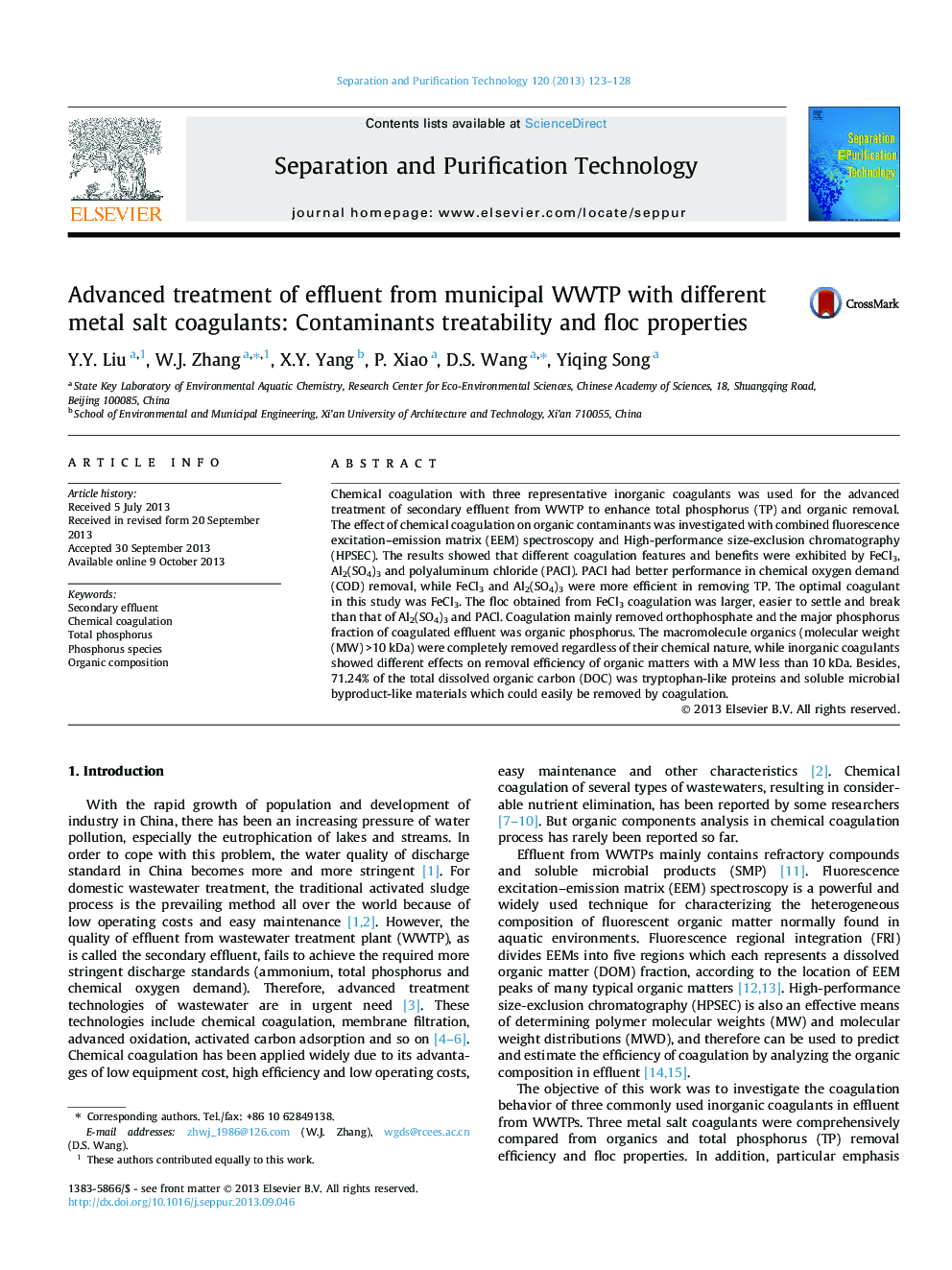| کد مقاله | کد نشریه | سال انتشار | مقاله انگلیسی | نسخه تمام متن |
|---|---|---|---|---|
| 641257 | 1456999 | 2013 | 6 صفحه PDF | دانلود رایگان |

• The coagulation treatability of contaminants in WWTP effluent was investigated.
• The residual phosphorus after treatment was mainly in the organic form.
• PACl showed a better performance in removing the organics of low molecular weight.
• Tryptophan-like proteins and SMP were easily removed by coagulation.
• FeCl3 coagulated floc was larger, easier to settle and more breakable.
Chemical coagulation with three representative inorganic coagulants was used for the advanced treatment of secondary effluent from WWTP to enhance total phosphorus (TP) and organic removal. The effect of chemical coagulation on organic contaminants was investigated with combined fluorescence excitation–emission matrix (EEM) spectroscopy and High-performance size-exclusion chromatography (HPSEC). The results showed that different coagulation features and benefits were exhibited by FeCl3, Al2(SO4)3 and polyaluminum chloride (PACl). PACl had better performance in chemical oxygen demand (COD) removal, while FeCl3 and Al2(SO4)3 were more efficient in removing TP. The optimal coagulant in this study was FeCl3. The floc obtained from FeCl3 coagulation was larger, easier to settle and break than that of Al2(SO4)3 and PACl. Coagulation mainly removed orthophosphate and the major phosphorus fraction of coagulated effluent was organic phosphorus. The macromolecule organics (molecular weight (MW) >10 kDa) were completely removed regardless of their chemical nature, while inorganic coagulants showed different effects on removal efficiency of organic matters with a MW less than 10 kDa. Besides, 71.24% of the total dissolved organic carbon (DOC) was tryptophan-like proteins and soluble microbial byproduct-like materials which could easily be removed by coagulation.
Figure optionsDownload as PowerPoint slide
Journal: Separation and Purification Technology - Volume 120, 13 December 2013, Pages 123–128